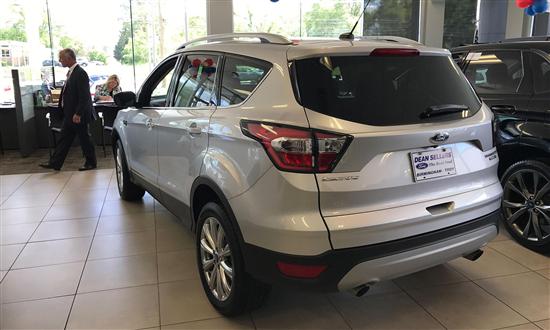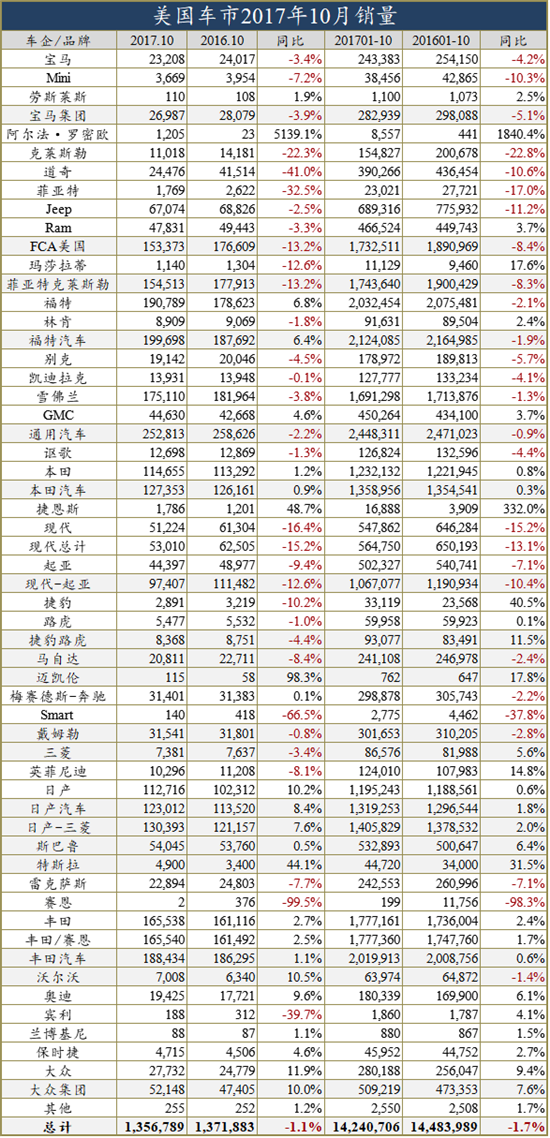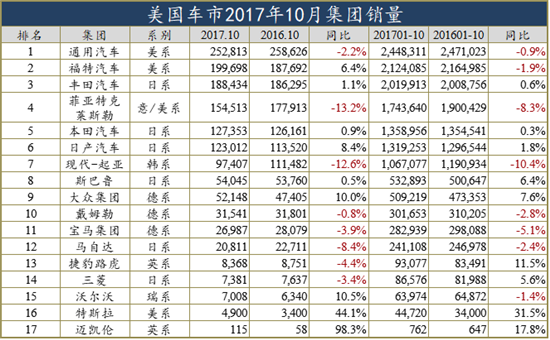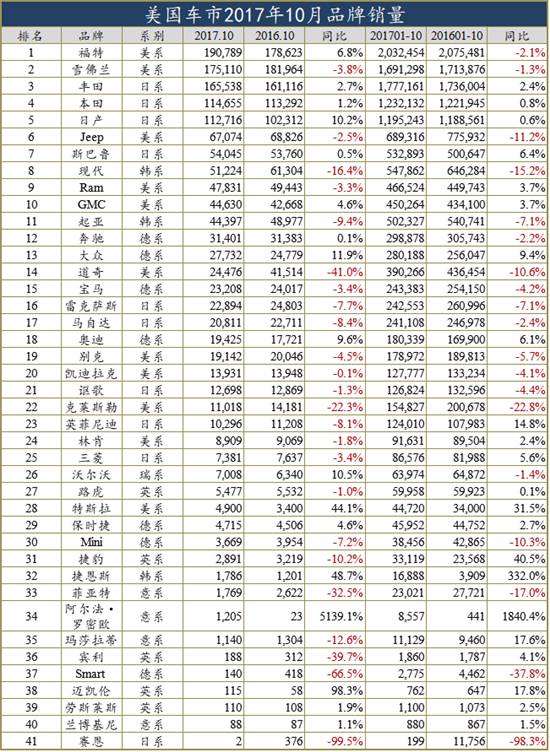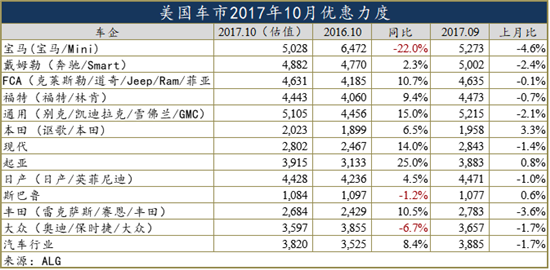In the 10 months and 9 months, the US auto market began to decline this year... In the twinkling of an eye, there were only two months left in 2017, and after eight consecutive months of market downturn and hurricane infestation, the sales volume of the US auto market in the first 10 months of this year fell 1.7% year-on-year to 14,244.1 vehicles. In the month of October, major auto makers sold a total of 1.357 million vehicles, a year-on-year decrease of 1.1%. Bright decline in October According to the "daily sales rate" DSR (Daily Selling Rate) introduced by American car companies, the sales date in October this year was 25 days, which is one day less than the 26 sales days in the same period of last year. Avoiding fluctuations caused by changes in the number of sales days, the US auto market also rose by 2.9% in October. From mid-October to mid-October of this year, only in September due to the replacement of vehicles after the hurricane disaster and the preferential policies of car manufacturers, light trucks recovered double-digit increases, and also activated the US auto market, creating the first increase this year. Although sales volume declined again in October, it actually went downhill. However, the performance of the auto market in the first 10 months has laid a year-long trend of decline. According to the seasonally adjusted annual sales rate SAAR (Seasonally Adjusted, Estimated Rate), it reached 18.11 million vehicles in October, which is the second-largest SAAR value this year, second only to the 18.58 million vehicles in September. According to the category, the car's decline expanded again after a brief narrowing in September, which dropped 8.8% year-on-year to 462,000 units; light trucks (SUVs, crossovers, pickups, and MPVs) increased by 3.4% to 895,000 units, unable to offset cars The decline. According to the origin of production, the U.S. domestic vehicles, while contributing more than one million vehicles in the month, fell 3.2% year-on-year; imported cars rose 6.6% year-on-year. Cumulative sales were a drop of 3.5% in local cars and an increase of 4.9% in imported cars. Change half and a half According to Autodata statistics of “One Word Reviewâ€, in the 41 automobile brands, sales in October dropped by 24, with 17 growth, and the number of brands rising accounted for about 60%. Of the 17 automakers, 8 fell, and 9 rose, each accounting for half. The United States’ largest automaker, General Motors, sold 253,000 vehicles last month, which fell 2.2% year-over-year, mainly due to Chevrolet’s sales decrease of 3.8% in October. The major vehicle model explorers and Silverado provided 5,608 vehicles and 3,389 vehicle increments, respectively, but the number of Chevrolet cars dropped by nearly 10,000. Ford's sales last month rose by 6.4% to 200,000 units driven by F-Series pickups and Sharp. The popular brand Ford increased 6.8% year-on-year to reach 191,000 units, of which 9.0% increase in light trucks was higher than the brand, and the sedan only slightly declined by 0.6%. Whether the US auto market rose or declined, the Volkswagen Group had almost no negative value. In October, it rose 10.0% year-on-year to 52,000 vehicles. The Volkswagen brand and the Audi brand contributed 11.9% and 9.6% growth, respectively. The latter, as the “quasi-first line†of the US luxury car market, sold nearly 20,000 vehicles in a single month. In the last six months, the Japanese car makers Toyota, Honda, Nissan and Subaru achieved growth, with Nissan increasing the most, up 8.4% year-on-year, and other car companies increasing by about 1%. The Toyota brand was overtaken by Chevrolet and it was ranked third in sales of American auto brands, but its cumulative sales still ranked second. Taken together, from the end of October to the end of October, the market environment of the US auto market is severe and major brands face greater pressure. If they have lighter trucks with stronger products, it is possible to avoid falling sales. Zhejiang Kehao Plastic Machinery Co., Ltd. , https://www.khplasticmachinery.com